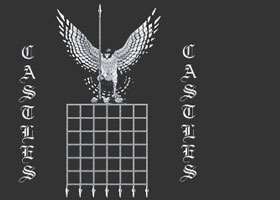Roman FortsHistory of the Roman Invasion of England
The Romans invasion started in 43AD. Hillforts such as Maiden Castle were captured and the English Celtic tribes lead by leaders like Caratacus were conquered. The Iceni Queen, Boadicea, lead a revolt against the Romans in 60AD but were savagely defeated - Hillforts, Slings and War Chariots were no match for the discipline and weapon technology of the Roman Army. The Roman Occupation was to last for nearly 500 years. The Romans left of their own accord responding to a recall to Rome to defend their homeland in 410AD when the Visigoths, led by Alaric, sacked Rome. Roman Forts in England
The Roman occupation of England lasted for nearly 500 years. Roman architecture and buildings left their mark on England. The Romans were great fortress builders - the purpose of these constructions were as fortified bases. These fortified bases were built as defences and as power bases. Wooden stockades were erected, surrounded by ditches, wherever they camped and whenever Roman Forts were built. Manpower, organisation and pre-fabricated forts enabled the Romans to build Roman Forts quickly and efficiently. Description and Design of Roman Forts
Roman building and their architecture was often rigid - the design of their forts and stockades were tried and tested and always followed the same architectural design. The Roman fort featured the following elements: - A strategic site was always chosen
- A fort could hold up to 800 men
- The fort was rectangular
- The fort was surrounded by a wide ditch
- A stockade was erected on top of the ditch which formed a defensive barrier made of timber posts
- A rampart was built with the earth from the ditch together with heavy stones
- Each fort had four stone gateways affording entrances on each side
- Watchtowers were also a feature reaching a height of 30 feet (9 metres)
- Roman Architecture and design dictated that two main streets crossed the fort
- Wooden structures were built serving as the Commanders headquarters, houses, hospital, workshops, barracks (sometimes tents) granaries, stables and a prison
- There was even a Fire Brigade within the fort!
- Some of the wooden Roman Forts were later replaced with stone buildings
- Stone Roman forts and buildings featured one of their great inventions - concrete! Concrete was made by mixing a strong volcanic material ( called pazzolana ) with rubble and a mixture of limes.
|

